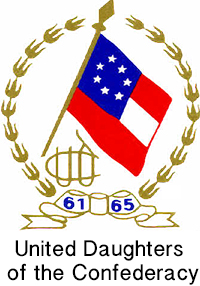Southern Virginia Homefront~
Mecklenburg's Contributions and Sacrifices in the Civil War
Calamitous War: Mecklenburg County, Virginia, and the War Between the StatesMecklenburg County, Virginia, emerged from the Civil War unscarred by battle within its boundaries. The only obvious physical evidence now that the war had even touched the county is a marker or two and the statue of a Civil War soldier before the courthouse. No earthworks. No cannonballs in the sides of buildings. The scars the war did leave are harder to see.
One of the Wealthiest
When the war started, Mecklenburg and her neighbors were generally known as being rich counties. In the July 4, 1861, issue of the Richmond, Virginia, Daily Dispatch, a correspondent reported that "Old Mecklenburg is by no means the least among the counties of Virginia in size, wealth and numbers. In refinement of its population, she is among the first rank, and ... in patriotism perhaps the first of the State. Glorious Old Dominion!"
At the time of the Civil War Mecklenburg County had farming operations from self-contained plantations of thousands of acres to small family operations. The area was well known for its quality horses, for horse breeding and racing.
According to the 1860 Federal Census, in Mecklenburg County the total population of the county was 20,096--6,778 were white, 898 were free blacks (total free population of 7,676) and 12,420 were enslaved. It was an agrarian society with slaves, 62% of the total population, providing most of the labor. To be defined as a slaveholder one had to own at least one slave. Of the 1,595 households in Mecklenburg at that time, 760 (48%) were slaveholders.
Meanwhile Back at Home
On April 17, 1860, Virginia voted to secede from the United States. By May the first companies were formed and men began leaving Mecklenburg. The county eventually sent nine companies to fight for the Confederacy. With most of the labor force off in the battlefield, women, old men, slaves and some service-exempt individuals (due to the necessity of their profession or business) were left to manage at home. The want of labor in the county was sorely felt, and very quickly. It was spring, after all, and crops and livestock--the means to food and/or money--needed attention. Shortly slaves and free blacks as well were conscripted to work for the Confederacy, leaving the homefront even more vulnerable. Women and others left at home were busy keeping up the farms, manufacturing clothing for soldiers, and when possible, sending food, pillows, socks, chickens, butter, wine, vinegar, soap, and money.
Care for the Needy
Care by the county for her needy was not new; it was accepted and expected. The county had a ten-room "Poor House," erected in 1848, east of Boydton. Salt, a vital commodity, was dispersed under the direction of local officials. Bonds were sold and taxes collected to raise funds for families of indigent soldiers and free blacks laboring for the Confederacy. By April 1864 the county was providing "necessities" to a thousand families (there were 1,595 households in 1860!) and had ascertained that it was "impossible either by purchase or impressment, both of which means have been resorted to, to supply those families to a moderate extent with the actual necessaries of life, until the next harvest."
Trying Times
The years 1864 and 1865 were particularly trying in Mecklenburg. Excessive drought, failed crops, no market for tobacco, support of the poor and the soldiers' families, rampant inflation. Horses and mules were being impressed for service; to replace them, if they could be found, would cost two or three thousand dollars each. To cap it off there was the nearby Battle of Staunton River Bridge and the "Wilson-Kautz Raid."
Hide the Horses!
Then in late April 1865 came "Sheridan's raiders" -- taking horses, food, and valuables as they went to overtake CSA General Johnston. Finally in June 1865 Mecklenburg and Brunswick counties were in the path of General Sherman's "peacetime" army: 30,000 men returning from North Carolina to rendezvous with Sherman (who travelled by sea) at City Point, Virginia in order to travel onto Washington DC for decommissioning. Again there was horse "taking," foraging to support the troops and destruction of crops and fencing.
Freedom
At war's end happily slaves were free; and men came home. Sadly others were dead and the economy was in ruins; many of the horses were gone, many farms were sold in bankruptcy, livelihoods disrupted. For approximately 61 percent of the population of the county, their legal status changed in the course of one day. They had been enslaved and suddenly they were free. The newly free needed jobs and/or land to make a living. While Mecklenburg County had escaped being a bloody battlefield, by war's end, the economy was shattered.
Starting Anew Brevet Major George Ward Nichols, aide-de-camp to Gen. Sherman observed in 1865: "The South is crushed almost beyond hope of speedy resurrection. Its armies are destroyed; its manufactures ruined; its work-shops and public building in ashes; its commerce and agriculture swept away. For us and for them a new era begins. A great work is to be accomplished in the rehabilitation of a wasted region."
In the late 1880s a Northern observer wrote: "I find that all the Southern people date everything now in their history to 'the surrender;' 'when Lee surrendered,' or 'before the war,' or 'since the surrender.' This is the date upon which their country had started anew."
Full version of the 'Calamitous War' here.
Annotated Version Coming Soon
The driving tour highlights the Civil War connection of many homes and sites by their occupants or use.
(c) Copyright 2014. All Rights Reserved. Designed by Jason Winter ||



